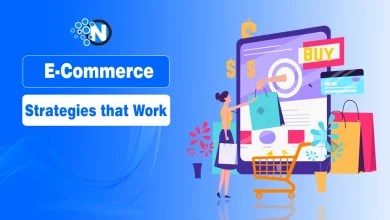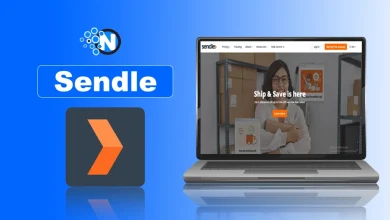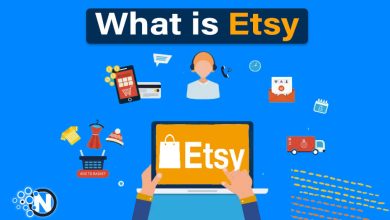Top 7 E-commerce Tech Trends Changing Online Shopping

Remember when online shopping was all about scrolling through product images and hoping that what you ordered would match your expectations? Those days are quickly changing as e-commerce technology evolves at a faster pace.
The modern online shopping experience is becoming increasingly advanced, as retailers are adopting new technologies to stand out among competitors and deliver an excellent shopping experience. From artificial intelligence to immersive shopping experiences, these innovations are redefining how consumers interact with online stores.
In this blog post, I will discuss the 7 game-changing e-commerce tech trends that are transforming how we shop online and how businesses sell to us.
Top 7 E-commerce Tech Trends

1. Immersive Shopping Experiences
The inability to physically interact with products has been one of the greatest issues associated with online shopping. This is where AR and VR come into play.
IKEA furniture store has been among the first online furniture retailers to create AR apps that allow consumers to see how a table or a sofa will appear in their real living room before buying it. Harvard Business Review reports that retailers employing AR are currently experiencing 40% higher conversion rates, and considerably fewer returns.
Allowing a virtual try-before-you-buy completely removes one of the greatest obstacles to online shopping: the inability to touch and feel an item, retail-tech consultant Maya Rodriguez said. Customers will have more confidence in their decision and it is a direct correlation into sales.
Affordable AR solutions are becoming increasingly accessible, with even smaller retailers gaining a foothold in the market. Virtual stores and 3D product displays are no longer exclusive to retailing giants with huge technology budgets.
2. Intelligent Personalization Solutions
Think of times you went into your local store of preference and the store owner perceived your taste and could suggest items you would enjoy? The online environment is creating this experience by resuming that personal touch with intelligent personalization.
The modern e-commerce systems track shopping patterns, customer history and even situational data such as weather and location to build personalised shopping experiences. This is a lot more than the general sense of recommendations to “customers who bought this also bought that.”
Dynamic content that resonates with personal tastes implies that two shoppers may view different versions of the same store. They can all be tailored to fit individual shopping habits in terms of product recommendations, special tabs and even pricing models.
3. Secure Identity Verification and Fraud Prevention
As online shopping grows, so does the risk of fraud. E-commerce businesses lost an estimated $41 billion to fraud in 2022 alone, according to Juniper Research .
Modern retailers are fighting back with advanced identity verification systems. Software for identity verification from providers like GetID helps businesses confirm customer identities without creating frustrating barriers in the shopping process.
“The trick is finding the balance between security and convenience,” explains e-commerce security expert Thomas Chen. “Too much friction during checkout, and customers abandon carts. Too little security, and businesses face chargebacks and fraud losses.”
The best solutions work quietly in the background, only triggering additional verification when suspicious patterns emerge. This risk-based approach protects businesses while keeping the shopping experience smooth for legitimate customers. That’s why ID verification and fraud prevention are one of the top e-commerce tech trends transforming online shopping.
4. Conversational Commerce and Customer Support
Remember the days of sending an email to customer service and waiting days for a response? That’s being replaced by instant, conversational support through various channels.
Chatbots have evolved from frustrating, script-following robots to advanced assistants that can handle complex customer inquiries. They’re available 24/7, respond instantly and can handle multiple customers simultaneously.
Voice commerce is also gaining traction, with smart speakers making it possible to order products through simple voice commands. “Alexa, order more coffee pods” is becoming as common as typing a search query.
The human touch remains important, though. The most successful retailers use automation for routine inquiries while ensuring human agents are available for complex issues that require empathy and creative problem-solving.
5. Mobile Commerce Innovations
With over 70% of e-commerce traffic coming from mobile devices, retailers are reimagining the mobile shopping experience.
Progressive Web Apps (PWAs) combine the best of websites and native apps, offering fast loading times, offline functionality and app-like experiences without requiring downloads. Major retailers report conversion rate increases of 20-30% after implementing PWAs.
One-tap checkout solutions eliminate the frustration of filling out forms on small screens. Services like Apple Pay, Google Pay and Shop Pay store payment and shipping information securely, allowing customers to complete purchases with minimal friction.
Location-based features are also enhancing mobile shopping. Retailers can send personalized offers when customers are near physical stores or use location data to improve delivery options and inventory management.
6. Smart Inventory and Supply Chain Management
Behind the scenes, e-commerce businesses are transforming how they manage inventory and fulfill orders.
Data-driven demand forecasting helps retailers predict what products will sell, in what quantities and when. This reduces both overstocking (which ties up capital) and stockouts (which frustrate customers).
Real-time inventory visibility across channels ensures that online shoppers don’t order products that are actually out of stock. This is particularly important for retailers with both online and physical presences.
Blockchain technology brings unprecedented transparency to supply chains. Customers increasingly want to know where products come from and how they’re made. Blockchain creates an unalterable record of a product’s journey from manufacturer to consumer.
7. Advanced Analytics for Customer Insights
The final element in the e-commerce technology puzzle is the ability to make sense of all the data generated by these systems.
The advanced analytic tools assist retailers in comprehending not only what customers purchase, but also why. Customer journey mapping is a technique that shows how customers navigate through a store on different touchpoints and devices.
Customer cohort analysis is a method of analyzing customers who share common attributes or behaviors, enabling more targeted marketing and product development. As an illustration, a retailer may find that customers who transact initially as part of a particular promotion have greater lifetime values.
The issue of privacy is driving a change in the collection and utilization of this data. Smart retailers are discovering how to extract value without the privacy of their consumers and meet their obligations under privacy laws such as GDPR and CCPA.
Putting It All Together
The most successful online retailers are not those using the most advanced technology, but those applying technology thoughtfully to solve real customer problems.
Before investing in new e-commerce technology, businesses should:
- Identify specific pain points in their current customer experience
- Research technologies that address those pain points
- Start with small, measurable implementations
- Gather customer feedback and adjust accordingly
- Scale successful solutions across the business
The e-commerce sector will continue evolving rapidly. Retailers who stay curious, customer-focused and willing to experiment will be best positioned to thrive in this dynamic environment.
Summing Up
The future of online shopping is not only about staying on to of e-commerce tech trends, but also about the use of technology to make online shopping more human, intuitive, and enjoyable. The digital shop of the future may be quite different from the one we have today, but it will still need to understand and fulfil customer needs.




